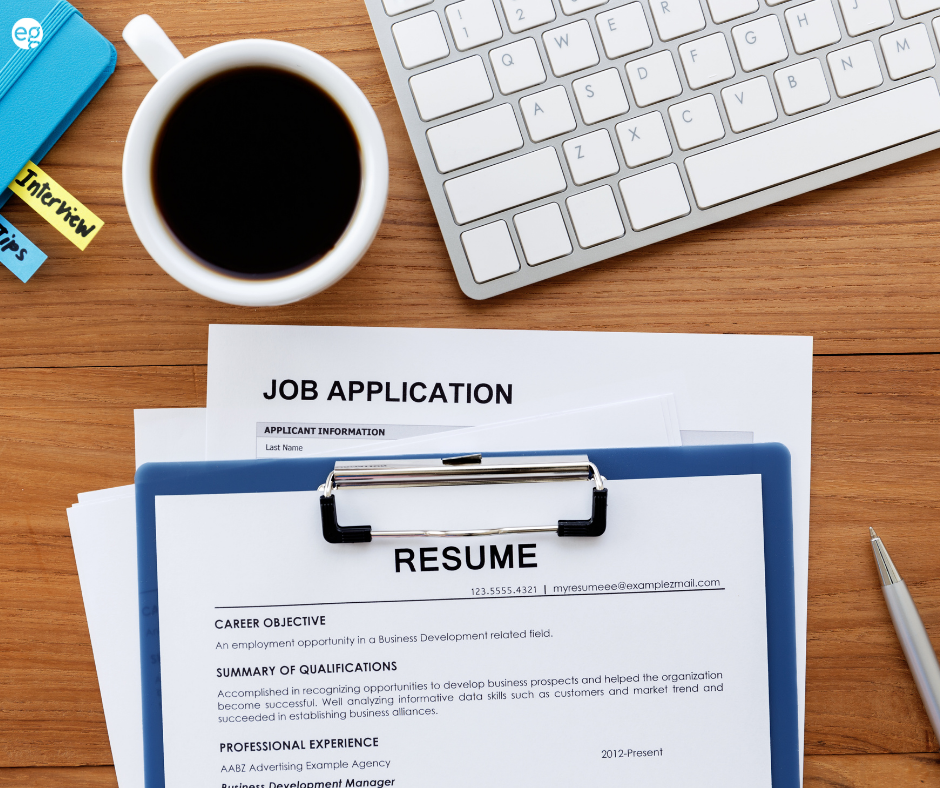As the country slowly makes its way back to “normal,” there are signs there will be a “mass resignation.” After spending upwards of a year and a half working remotely, having a flexed schedule, or having protective measures implemented in the workplace, some employees will not accept the looming changes. Many others are simply overwhelmed, over-stressed, and overworked from the past year and are burnt out. This means, if your company is unwilling to adapt, you’re at risk of losing your top employees. Here are the three signs your top talent is preparing to leave.
They Are Disengaged in Their Work
One of the most telling signs your top employees are preparing to leave is they’re no longer engaged in their work. Your best employees are most likely your best employees because they are engaged in their work, motivated to succeed, and productive in their role. When they are preparing to leave, this is usually preceded by the sudden disengagement they show in their work. Everyone has days where they might not put forth their best effort; if you notice a sudden or dramatic change in your top performer’s engagement, it’s a pretty big warning sign you’re at risk of losing them.
They Aren’t Offering New Ideas or Suggestions
When you’re accustomed to your best employees offering their ideas or suggestions on projects or processes, and suddenly they are no longer sharing their thoughts, this can be another warning sign they are preparing to leave. Sometimes, your top talent will experience slumps or burnout that will affect their productivity; if it becomes consistent, managers should take note. Managers should do their best to support their team members during these “slumps” to help prevent burnout – or worse, a resignation.
They Aren’t Participating in Company Events
Many companies have tried to provide their teams with the opportunity to “hang out” in different ways over the past year and a half. From virtual happy hours to socially distanced gatherings, there have been many creative ways teams have come together to socialize. However, if you notice your top performer(s) are no longer participating, this is a warning sign they’re distancing themselves from their coworkers and the company. Don’t panic if they miss the occasional event, but if you start to notice a pattern, the employee might be preparing to leave.
While no organization wants to see their top talent leave, at the end of the day, each of your employees is unique and has different needs, wants, and desires for their career. A key to retaining your best employees is ensuring your team is happy and giving them the freedom and autonomy to do their jobs the way that works best for them. When companies do this, it’s a real win/win because almost nothing else will bring increased success to a business than employees who are engaged and excited to be at work every day!
About EG Workforce Solutions
We’ve been in this business for decades and have developed a deep network of professional connections. Whether they’re companies looking for talent, job seekers looking for work, or an up-and-coming store in need of some temporary help, we know the right people to bridge the gap between the hiring and the hired.
But what’s more, we get to know people. From employers hiring to candidates looking, we take the time to listen and learn. We hear your likes, talents, and needs. We gain an understanding, and with it, we’re able to facilitate lasting relationships between businesses and people.
We get it; no one really enjoys hearing constructive criticism about their work; however, it can be a great learning opportunity with the right mindset! Critical feedback doesn’t have to be an uncomfortable or negative experience when you choose to take it as an opportunity to grow your skills. Here are four ways to handle critical feedback so you can grow your career and succeed!
Gut-check Your First Reaction
When you first start to receive critical feedback, don’t give in to your first knee-jerk reaction. It will be easy to automatically get defensive or shut down from the information you’re hearing. It’s vital to “gut-check” your first reaction as you receive constructive criticism. It’s best to try not reacting at all! If you feel the need to immediately get defensive or take the feedback personally, you’ll likely miss out on the opportunity to learn and grow from it. In fact, the experience, if you don’t gut-check your first reaction, might even make you bitter towards your work or resentful towards your manager.
In almost every instance, critical feedback isn’t given as an attack or even aimed at you personally. While it’s easy to take it that way, doing a gut-check on your first reaction will help you separate the feedback from your emotions.
Taking a moment to pause your emotions and gut-check your first reaction will help you shift your mindset when receiving critical feedback. You’ll be able to keep your emotions in check so you can absorb what you’re being told without letting an emotional reaction get the best of you.
Listen to Understand
Much like “gut-checking” your first reaction, it’s important to listen with the intention of understanding rather than to respond. When you receive constructive criticism, it is almost always because your manager wants to help you improve – and improve the efforts you contribute to the organization.
If you only listen to the feedback to respond defensively, you’ll miss out on the opportunity to learn and grow. When you listen to understand, you’ll be able to have a productive conversation about the issue and how improvements can be made.
At this point in the conversation, you should avoid over-analyzing or questioning your manager’s critical feedback; instead, focus on understanding their comments and perspective. You should also consider giving the benefit of the doubt here—after all, it can sometimes be challenging to give tough feedback to another person. Be aware that whoever is giving you feedback might be nervous or may not be expressing their ideas as clearly as they’d like. When you take the time to truly listen to what the other person is telling you, you’ll both be able to have real dialogue about it moving forward.
Ask Questions for Clarity
After you’ve listened to understand, you can start asking questions for clarity on the areas for improvement. However, avoid turning this into a debate—when this happens, it’s too easy for emotional reactions to take over the situation, and it won’t be easy to make the experience a learning opportunity.
– Ask for specific examples to help you understand the issue.
– Acknowledge the facts that cannot be disputed. If you were given a concrete example of the issue, don’t try to debate it.
– Take responsibility for it and prepare to make the improvements.
– Ask if this is an isolated or ongoing issue. Is this a mistake you’ve only made once, or has this been happening for a while?
– Ask for concrete solutions and improvements in the feedback. This will help you and your manager make an action plan on
resolving the issue.
Request Time to Follow-up
As the conversation comes to an end, you must articulate your plan for changes you plan to make moving forward and schedule a time to follow up on how those changes are going. This follow-up will allow you to continue the conversation, ask more questions, and plan next steps for how you can continue to improve.
Sometimes, hearing constructive feedback can make you aware of gaps or weaknesses you have without even knowing. However, becoming aware of these weak spots is a great way to start improving—ignorance isn’t bliss when it comes to work success!
Learning to graciously accept critical feedback takes time but is so worth it for advancing your career. When you gut-check your first reaction, listen to understand over listening to react, seek clarification through questions, and make time to follow up when you receive constructive criticism, you’ll find it’s an experience you can learn and grow from. With the mindset critical feedback is a learning and growth opportunity, instead of a personal attack, you’ll see your career move forward.
About EG Workforce Solutions
We’ve been in this business for decades and have developed a deep network of professional connections. Whether they’re companies looking for talent, job seekers looking for work, or an up-and-coming store in need of some temporary help, we know the right people to bridge the gap between the hiring and the hired.
But what’s more, we get to know people. From employers hiring to candidates looking, we take the time to listen and learn. We hear your likes, talents, and needs. We gain an understanding, and with it, we’re able to facilitate lasting relationships between businesses and people.
Just because you’ve created a resume doesn’t mean that’s the one you’ll use forever as is. You should be updating your resume on a fairly regular basis – whether you’re currently employed or searching for a new job. We’ll break down just how often you should update your resume!
If You’re Currently Employed
Even if you’re not actively seeking new employment, you should still be updating your resume one to two times a year. You’ll want to add skills and experiences you’ve accomplished in your current role, so you don’t forget about them later on. Making sure you update your resume regularly – even if currently employed – will make it easier for you to have a resume ready to go should you need it unexpectedly for a job search.
If You’re Job Searching
If you’re job searching, you’ll need to be updating your resume much more frequently. You may even need to tailor it for each application you send. As an active job seeker, you should have an accurate but relevant resume for each position you’re applying for. Tailor your resume for each application to highlight your relevant skills and experience will edge you out as a better candidate from the competition.
If You Have a Career Update
You’ll also want to update your resume when you have career news. If you’ve earned a certification, completed a learning course, got a promotion, or accomplished a significant project, be sure to add to your resume! You’ll also want to add any other relevant updates such as certain volunteer work, education, awards, or other achievements.
If the Information isn’t Relevant
As you continue down your career path, you’ll learn and grow new skills and experience. This means some of your information listed on your resume will no longer be relevant. For example, if you’re looking for a senior management position and you have other management positions listed on your resume, but you also have your first “pet sitter” job listed, you can remove it. Hiring managers will only be interested in the previous work experience that is relevant to the position you’re searching for.
Your resume should be treated as a “living document.” This means it should be updated whenever there’s a change to your career, some of the information is out of date or no longer relevant, or if you’re job searching. Staying on top of updating your resume regularly will make it easier to manage any changes that need to be made.
About EG Workforce Solutions
We’ve been in this business for decades and have developed a deep network of professional connections. Whether they’re companies looking for talent, job seekers looking for work, or an up-and-coming store in need of some temporary help, we know the right people to bridge the gap between the hiring and the hired.
But what’s more, we get to know people. From employers hiring to candidates looking, we take the time to listen and learn. We hear your likes, talents, and needs. We gain an understanding, and with it, we’re able to facilitate lasting relationships between businesses and people.
When organizations want to check the pulse of their culture, employee satisfaction, and department pain points, many will deploy an eNPS survey – an Employee Net Promoter Score survey. This survey simply asks employees how likely they are to recommend working at their organization to a friend or family member on a scale from 1-10. Then leaves them the ability to add a comment on why they gave that score. The survey is completely anonymous for the responders and shows the organization’s top leadership insights into how their employees view the organization’s culture – both positive and negative. Utilizing an eNPS survey can improve your company culture in these three ways.
Improves Employee Loyalty
Your loyal employees are your brand advocates. By harboring employee loyalty, you increase your brand’s goodwill which helps to attract talent in the long run. Utilizing eNPS gives your organization valuable insights on where your employees are satisfied and where their pain points are.
These insights then mean your organization can implement the changes or solutions needed to relieve your employees’ pain points. When your team feels and sees that their voices are being heard and solutions are being implemented, they will be more loyal to your organization. Loyal employees are retained employees, and retained employees are better for your bottom line!
Improves Employee Engagement
Much like giving insights into your employees’ loyalty, eNPS also gives organizations crucial data on their employee engagement levels. Again, when organizations can see where their employees are struggling, have pain points, are falling off, changes and solutions can be put in place.
Excellent employee engagement is essential to your organization’s bottom line; it impacts your employees’ motivation and productivity. It also has an impact on your organization’s revenue. In fact, companies with highly engaged employees are 21% more profitable as compared to their competitors with disengaged work cultures.
Improves Employer Branding
Your employer brand is essentially how your employees, clients, and customers view your organization’s reputation. This can be a powerful influence on how you retain your employees, hire new team members. It’s easy for people to learn about your employer branding by searching sites with company reviews like Glassdoor. If many negative reviews highlight unaddressed pain points in your organization, it’s going to be tough to attract top talent to your organization. Likewise, if there are many positive reviews, you’ll have top talent coming to you!
If you want to improve your employer brand, utilizing eNPS is a great option. A positive employee experience means your team is generally happy and satisfied with the work they’re doing. It stands to reason then that this employee satisfaction motivates your team to go the extra mile when engaging with customers, clients, tasks, and goals. All of this drives a higher level of employer branding.
Companies that use eNPS to understand their company culture better and have data on where it’s thriving and areas for improvement. Using this data to continue down the path where employees are thriving and bringing solutions to their pain points will see increased employee loyalty, engagement, and better employer branding.
About EG Workforce Solutions
We’ve been in this business for decades and have developed a deep network of professional connections. Whether they’re companies looking for talent, job seekers looking for work, or an up-and-coming store in need of some temporary help, we know the right people to bridge the gap between the hiring and the hired.
But what’s more, we get to know people. From employers hiring to candidates looking, we take the time to listen and learn. We hear your likes, talents, and needs. We gain an understanding, and with it, we’re able to facilitate lasting relationships between businesses and people.




